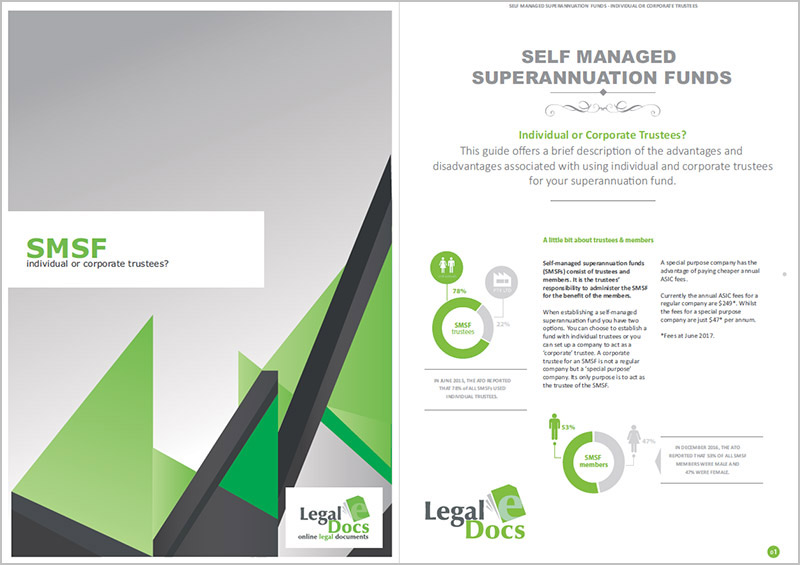Family Trust Elections
.
Family trusts and family trust elections
Most accountants say family trusts are a sensible way to run a business or investment enterprise. Family trusts are easy and cheap to set up. Banks understand them. No problems there. Family trusts protect assets: a beneficiary may be bankrupt but trust assets will usually be safe. And family trusts are efficient for income tax planning and estate planning purposes.
On the tax side of things, complications may arise if a family trust derives franked dividends or incurs a carry forward tax loss. In 2005 the government decided a family trust must, in effect, agree to not distribute net income outside the immediate family group, as defined, if the usual rules for franked dividends and carry forward losses (and certain other benefits) are to apply.
The mechanism to record this agreement is a “family trust election” (FTE).
The FTE mechanism effectively prohibits distributions outside the relevant family group, as defined by the ATO. In a sense it’s a trade-off: to get the benefit of the franking credit rules and carry forward tax rules (and certain other benefits) a family trust must agree to not distribute net income outside the family group (at least without paying penalty tax).
Does a family trust have to lodge an FTE with the ATO?
No, a family trust does not have to lodge an FTE with the ATO.
Should a family trust lodge an FTE with the ATO?
If the family trust does not expect to derive franked dividends or have a carry forward tax loss there may be no need to lodge an FTE with the ATO.
But if the family trust does expect to derive franked dividends or have a carry forward tax loss it may be advantageous to lodge an FTE with the ATO. This is because the family trust may not otherwise get the full benefit of the franking credit rules and the carry forward tax loss rules.
Each case is different and should be considered on its merits. Your accountant’s advice should be sought before making any final decision.
Example of where an FTE may not be advantageous
If a family trust’s only asset is a non-geared investment property and its only income is the rent from that property, it is unlikely to derive franked dividend income or incur a carry forward tax loss. Here there will probably be no advantage in lodging an FTE, and therefore no real point in doing so.
On the other hand, if a family trust’s only asset is a large parcel of BHP shares, and its only income is franked dividends, an FTE will probably advantageous. The FTE will make sure:
(i) the full benefit of the franking credits, including a refund of any excess credits, is available and
(ii) the family trust can deduct all carry forward tax losses against subsequent year income (subject to the income injection test).
What happens if you do not lodge an FTE with the ATO?
Nothing. Life goes on. Unless:
(i) the family trust derives franked dividends, in which case some or all of the franking credits may not be available to the beneficiaries, or
(ii) the family trust has a carry forward tax loss, in which case some or all of the tax loss may not be able to be deducted against subsequent year assessable income unless certain conditions are met.
So, as a practical matter, family trusts which expect to have significant franked dividends or significant carry forward tax losses probably should probably lodge an FTE with the ATO. But your accountant’s advice should be sought before a final decision is made.
Is there a disadvantage of lodging an FTE?
Yes, there is a disadvantage.
The FTE in effect narrows the class of persons who can receive tax efficient distributions from the trust. The FTE creates a “family group”. This family group is usually narrower than the class of persons defined as beneficiaries in the trust deed.
If the trust distributes net income to a beneficiary who is not in the family group the trustee is taxed at the top marginal rate plus the Medicare levy This is called “Family Trust Distribution Tax”, or “FTDT”.
In most cases the FTDT will be greater than the tax otherwise payable on the net income, so in this sense the FTDT is a penalty tax. FTDT is rare, because, for obvious reasons, most trustees will not distribute net income to a person not in the family group.
What is a “family group”?
The FTE specifies an individual to be the “test individual”.
The test individual will usually be one of the persons defined as a primary beneficiary in the trust deed.
Family group diagram (taken from ATO website)

How is “family group” defined?
The “family group” is defined by reference to the test individual. The family group is the test individual and:
(i) any parent, grandparent, brother or sister of the test individual or the test individual’s spouse
(ii) any nephew, niece or child of the test individual or the test individual’s spouse
(iii) any lineal descendant of a nephew, niece or child referred to in point (ii) and
(iv) the spouse of the test individual or of anyone who is a member of the test individual's family because of points (i), (ii) and (iii).
Related trusts are in the family group provided they have lodged an FTE with the ATO and have the same test individual.
Is the definition of “family group” onerous?
It can be. This is because the FTE family group is narrower than the class of general beneficiaries in most modern family trust deeds.
The lodgement of an FTE may limit the ability of the family trust to distribute net income to related entities, such as related trusts and related companies.
For example, it may not be possible to distribute net income to a trust controlled by the test individual’s adult daughter without triggering FTDT. This is because the adult daughter’s family trust is not in the family group.
This loss of income distribution flexibility needs to be weighed against the advantages of an FTE. The best advice is to get your accountant’s advice on how this effects your family trust.
Is the family group the same as the beneficiaries under the trust deed?
It may be. It depends on what how “beneficiaries” is defined in the trust deed. But most modern trust deeds will define “beneficiaries” more broadly to include a wider class of persons than “family group”.
The mere fact that a person is inside the “family group” does not mean the trustee can distribute net income to that person. That person must also be a beneficiary as defined under the trust deed.
The trustee can distribute net income to a person who is a beneficiary under the trust deed. But that distribution will trigger FTDT, which is in effect a penalty tax. Such distributions are rare in practice.
Are there any other advantages of lodging an FTE?
Yes, there are. For example, an FTE trust may be able to reorganise itself without triggering what would otherwise be a capital gains tax liability. This is because the individuals in the family group qualify as “ultimate economic owners” under the CGT small business restructure rules.
It may make sense to lodge an FTE if a significant restructure is contemplated. Once again, your accountant’s advice should be sought before deciding to lodge an FTE.
Distributions to related trusts and related companies
One advantage of a family trust is the ability to distribute net income to “related entities”. Typically this is another trust or company in which an individual beneficiary has some form of ownership interest or is otherwise a beneficiary. Such distributions may reduce the overall incidence of income tax within the family group.
A family trust can distribute net income to a related trust or company provided the related trust or company has lodged an appropriate FTE or an “Interposed Entity Election” (IEE) with the ATO.
The rules for family trusts distributing net income to related entities are complex and require specific advice from your accountant.


